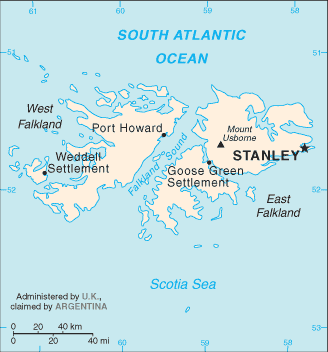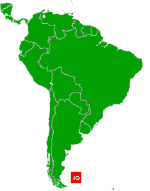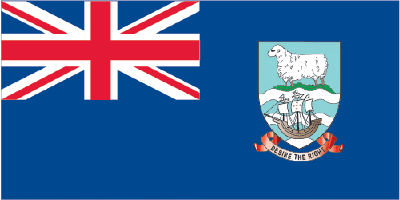| Falkland
Islands The Argentine
name for the Falkland Islands, Islas Malvinas, is
from the French word Malouins, the name
for inhabitants of the French city ot St. Malo
who attempted to establish a colony in 1764.
  Location off the
southern coast of Argentina Location off the
southern coast of Argentina
Total Area
4,700 sq mi (12,173 sq mi)
Highest Point Mount
Usborne; 2,313 ft (705 m)
Lowest Point sea level
Natural Resources none
Population (July 2014
est) 3,361
Largest Cities Port Stanley
Ethnic Groups Falkland
Islander, British, St. Helenian, Chilean, other
Languages English, Spanish
Religions Christian
Capital
Stanley
Form of Government overseas
territory of the United Kingdom; also claimed by
Argentina
Chief of State Queen Elizabeth II
Head of Government Chief
Executive Keith Padgett (since February 1, 2012)
Cabinet Executive Council
Legislature unicameral
Legislative Assembly
Currency
Falkland pound
Per Capita Income $55,400
Principal Industries fish
and wool processing; tourism
Agricultural Products fodder and
vegetable crops; venison, sheep, dairy products;
fish, squid
Export Commodities wool,
hides, meat, venison, fish, squid
Import Commodities fuel,
food and drink, building materials, clothing
National Holiday
Liberation Day; June 14 (the date in 1982 when
the British Navy succeeded in ousting an
Argentinian invasion)
Flag blue, with the flag of the
United Kingdom in the upper hoist-side quadrant
and the Falkland Island coat of arms
centered on the outer half of the flag; the coat
of arms contains a white ram (sheep raising was
once the major economic activity) above the
sailing ship Desire (whose crew discovered the
islands) with a scroll at the bottom bearing the
motto DESIRE THE RIGHT


Argentina
Queen Elizabeth II
Questions or comments about
this page?
|



